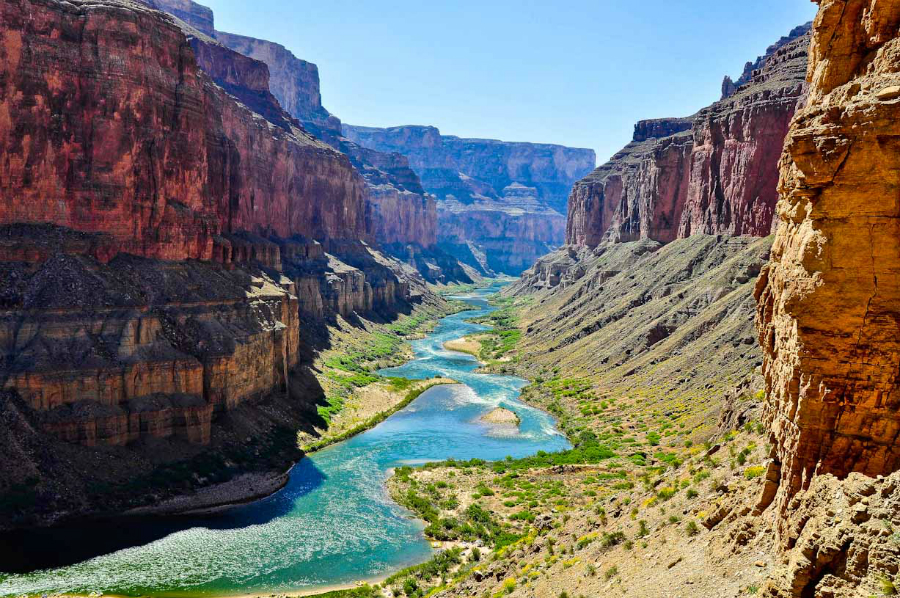
Western states cannot agree on massive water cuts, leading to historic juncture
The seven affected states must submit a plan to conserve billions of gallons of water by 2023. So far, the negotiations are not looking good. The states in the Lower Basin of the Colorado River – California, Arizona and Nevada, are struggling to come up with a fair plan for all. The states in the Upper Basin – Colorado, Wyoming, New Mexico and Utah, are also clashing over resource allocation, and are blaming the Lower Basin states for not doing their part. The leaders over urban and agricultural water districts are having difficult discussions about water cuts that would impact millions of people in different living environments. Which districts take precedence? Whose tap water will be restricted first? Who will pay the higher prices? Will the agricultural districts have enough water to keep crops alive? Will people living in the city be able to bathe? “There are a lot of different interests at loggerheads. And there’s a lot to overcome, and there’s a lot of animosity,” said Kyle Roerink, executive director of the Great Basin Water Network. “It’s going to be a mess,” he continued. “I don’t see how we ever get over some of what I believe are irreconcilable differences among the states.”Federal government calls for 30% cuts to current water usage to prevent national emergency
In a congressional hearing on June 14, 2022, the federal government called for urgent action to cut current water usage by 15 to 30 percent. The Commissioner at the Bureau of Reclamation, Calimlim Touton, announced an additional 2 to 4 million acre per feet reduction in water use by 2023. She warned the states that the federal government will “act unilaterally to protect the system” if an agreement is not made over the next sixty-day period. This will likely lead to federal intervention, lawsuits and court battles. If the states do not come up with a plan to cut water usage, and legal proceedings are not enforced, the federal government will literally have to move in with the military to defend the precious Lake Mead and Lake Powell, shutting off supplies to millions. Sixty days have passed since the congressional hearing, and the states have still failed to finalize their cuts. States in the Upper Basin have pointed the finger at the states in the Lower Basin, because they traditionally use more of the water. The Imperial Irrigation District, which supplies water to farms in California’s Imperial Valley, controls the largest share of the water from the Colorado River. The states in the Upper Basin believe the next cuts should come from the Lower Basin states, especially in California. Charles Cullom, executive director of the Upper Colorado River Commission, said that the four states in the Upper Basin have “limited” options available and cannot cut back any more, without compromising agriculture and livelihoods. He reports that the upper states “already suffer chronic shortages under current conditions.” To stay up-to-date on this historic juncture, check back with WaterWars.News. Sources include: StrangeSounds.org WaterWars.NewsCalifornia county announces end of daytime police patrols, citing “catastrophic” staffing issues
By Ramon Tomey // Share
US sees rapid growth in number of preppers, around 15 million Americans now actively prepping
By Kevin Hughes // Share
Crypto 9/11 is now under way… a “controlled demolition” event to usher in HEAVY regulation
By Mike Adams // Share
By News Editors // Share
An invisible assault: How everyday heavy metals sabotage brain health
By willowt // Share
Pentagon warns of China's rapidly expanding nuclear arsenal
By kevinhughes // Share
FCC grounds new Chinese drones in sweeping security move
By avagrace // Share
The methylation switch: Scientists identify diet that can turn back the cellular clock
By jacobthomas // Share
Renaissance or Ruin: A wake-up call for cultural revival and self-sufficiency
By kevinhughes // Share
Weight loss in midlife may trigger brain inflammation, study finds
By avagrace // Share











